Are you looking for a way to keep your furry friend entertained and mentally stimulated? Look no further than dog puzzle toys! These ingenious inventions provide hours of fun and mental exercise for dogs of all breeds and sizes. But what exactly are dog puzzle toys, and how do they work? In this complete guide, we’ll delve into everything you need to know about these interactive toys, including their benefits, types, how to choose the right one for your pup, and tips for getting the most out of them.
Contents Overview
What are Dog Puzzle Toys?
Dog puzzle toys are interactive toys designed to challenge your dog’s mind and keep them entertained. They typically involve hiding treats or kibble inside a toy, which your dog must then figure out how to retrieve through a series of actions. These toys mimic the natural foraging and problem-solving behaviors that dogs would exhibit in the wild, providing mental stimulation and preventing boredom.
Benefits of Dog Puzzle Toys
In this comprehensive guide, we’ll delve into the various advantages of incorporating puzzle toys into your dog’s routine.
- Mental Stimulation:
- Dogs are intelligent creatures that thrive on mental challenges. Puzzle toys engage their problem-solving skills, keeping their minds sharp and active.
- Stimulating activities help prevent boredom and reduce the likelihood of behavioral issues such as excessive barking or destructive chewing.
- Mental stimulation is particularly crucial for working breeds and high-energy dogs who require ample mental exercise to stay content and balanced.
- Physical Exercise:
- Many puzzle toys require physical manipulation, such as pawing, nosing, or rolling, to reveal hidden treats or toys.
- This physical activity helps burn off excess energy, making puzzle toys an excellent addition to a dog’s exercise regimen.
- Engaging in physical play also promotes better circulation, muscle tone, and overall physical health.
- Stress Relief:
- Solving puzzles can be a calming activity for dogs, akin to solving a crossword puzzle for humans.
- The focus and concentration required to solve the puzzle can help alleviate stress and anxiety, especially in dogs prone to nervousness or separation anxiety.
- Puzzle toys can serve as a form of mental enrichment, offering a constructive outlet for pent-up energy and emotions.
- Prevents Boredom and Destructive Behavior:
- Dogs left alone for extended periods often resort to destructive behaviors out of boredom or frustration.
- Puzzle toys provide a mentally stimulating alternative to destructive chewing or excessive barking, keeping dogs occupied and content in their owner’s absence.
- By channeling their energy into solving puzzles, dogs are less likely to engage in undesirable behaviors, preserving household harmony.
- Builds Confidence and Independence:
- Successfully solving a puzzle can instill a sense of accomplishment and boost a dog’s confidence.
- Dogs learn to problem-solve independently, enhancing their cognitive abilities and fostering a sense of autonomy.
- This newfound confidence can translate into improved behavior and better adaptation to various situations and environments.
- Promotes Bonding:
- Interactive playtime with puzzle toys strengthens the bond between dogs and their owners.
- Collaborative activities, such as teaching a dog how to solve a puzzle or rewarding them for their efforts, deepen the human-canine relationship.
- Sharing enjoyable experiences through play builds trust and reinforces the emotional connection between pet and owner.
- Variety of Options:
- Dog puzzle toys come in a variety of shapes, sizes, and complexity levels to suit different breeds, ages, and skill levels.
- From simple treat-dispensing balls to intricate multi-step puzzles, there’s a toy to challenge and engage every dog.
- Owners can experiment with different types of puzzle toys to find the ones that best suit their dog’s preferences and abilities.
Types of Dog Puzzle Toys
Dog puzzle toys come in various forms, each designed to challenge your pup’s problem-solving abilities and keep them engaged. Let’s explore the different types in detail:
- Treat Dispensers:
- Description: Treat dispensers are interactive toys that reward your dog with treats when they engage with the toy in a specific manner. These toys typically feature compartments or openings where treats can be inserted.
- Mechanism: Dogs must manipulate the toy, such as pushing, rolling, or shaking it, to release the treats hidden inside. Some treat dispensers require simple actions, while others involve more complex maneuvers.
- Examples: Kong Wobbler, Busy Buddy Twist ‘n Treat, Outward Hound Treat Dispensing Puzzle Toy.
- Interactive Puzzles:
- Description: Interactive puzzles require dogs to solve a series of challenges to access the treats hidden within the toy. These puzzles often feature compartments, sliders, or moving parts that conceal the treats.
- Mechanism: Dogs must use their paws, noses, or mouths to manipulate the puzzle elements and uncover the treats. The complexity of the puzzles can vary, offering options for both beginners and advanced puzzlers.
- Examples: Nina Ottosson Dog Brick, Trixie Dog Activity Flip Board, Outward Hound Hide-A-Squirrel Puzzle Toy.
- Food-Dispensing Toys:
- Description: Food-dispensing toys hold your dog’s entire meal and dispense it gradually as they interact with the toy. These toys are excellent for promoting slower eating habits and preventing boredom during mealtime.
- Mechanism: Dogs must roll, paw, or nudge the toy to release small amounts of food at a time. Some food-dispensing toys feature adjustable difficulty levels to accommodate different skill levels.
- Examples: Kong Classic, PetSafe Busy Buddy Twist ‘n Treat, Omega Paw Tricky Treat Ball.
- Chew Puzzle Toys:
- Description: Chew puzzle toys combine the benefits of a puzzle toy with the durability of a chew toy. These toys are designed to withstand heavy chewing while still providing mental stimulation.
- Mechanism: Dogs must chew on the toy to access the hidden treats or compartments. Some chew puzzle toys feature textured surfaces or ridges to massage gums and promote dental health.
- Examples: Benebone Pawplexer, Nylabone Dura Chew Textured Dog Chew, PetSafe Busy Buddy Bristle Bone.
- Hide-and-Seek Toys:
- Description: Hide-and-seek toys involve hiding treats or toys within compartments or pockets, challenging your dog to use their sense of smell to locate them.
- Mechanism: Dogs must sniff out the hidden treats and use their paws or noses to access them. These toys can be used indoors or outdoors for added versatility.
- Examples: Outward Hound Hide-A-Squirrel, Trixie Activity Gambling Tower, Ethical Pet Seek-A-Treat Shuffle Bone.
How to Choose the Right Dog Puzzle Toy
Choosing the right dog puzzle toy requires careful consideration of your dog’s size, preferences, and skill level. Here’s a comprehensive guide to help you select the perfect puzzle toy for your furry friend:
- Consider Your Dog’s Size and Breed:
- Size: Choose a puzzle toy that is appropriate for your dog’s size to ensure they can interact with it comfortably and safely. Larger dogs may require more robust toys, while smaller breeds may prefer smaller, more manageable options.
- Breed: Consider your dog’s breed characteristics and natural instincts when selecting a puzzle toy. For example, breeds with a strong prey drive may enjoy toys that involve chasing or hunting, while breeds known for their intelligence may thrive on more challenging puzzles.
- Assess Your Dog’s Skill Level:
- Beginner vs. Advanced: Determine your dog’s puzzle-solving abilities and choose a toy that matches their skill level. Start with simpler puzzles for beginners and gradually introduce more complex challenges as your dog becomes proficient.
- Trial and Error: Be prepared to experiment with different types of puzzles to find the ones that best suit your dog’s abilities and interests. Some dogs may excel at certain types of puzzles while struggling with others.
- Evaluate the Toy’s Design and Durability:
- Material: Select puzzle toys made from durable, non-toxic materials that can withstand rough play and chewing. Look for toys made from sturdy rubber, nylon, or hard plastic to ensure they last.
- Construction: Check the toy’s construction for any weak points or potential hazards, such as small parts that could be chewed off and swallowed. Avoid toys with easily detachable components that could pose a choking risk.
- Texture: Consider the texture of the toy’s surface, as some dogs may prefer textured or ridged toys that provide tactile stimulation and promote dental health.
- Choose Toys with Adjustable Difficulty Levels:
- Adaptability: Opt for puzzle toys with adjustable difficulty levels or multiple challenge options to accommodate your dog’s evolving skills. This allows you to tailor the toy to your dog’s individual needs and prevent boredom.
- Gradual Progression: Start with the easiest setting and gradually increase the difficulty as your dog becomes more proficient. This gradual progression helps keep your dog engaged and prevents frustration.
- Take Your Dog’s Preferences into Account:
- Favorite Activities: Consider your dog’s favorite activities and preferences when choosing a puzzle toy. If your dog enjoys chasing and retrieving, opt for a treat dispenser or puzzle toy that involves fetching. If they prefer chewing, look for durable chew puzzle toys.
- Food Motivation: If your dog is highly food-motivated, choose puzzle toys that dispense treats or meals as a reward for solving the puzzle. This can increase your dog’s interest and motivation to interact with the toy.
- Read Reviews and Recommendations:
- Research: Take the time to read reviews and recommendations from other dog owners to learn about their experiences with different puzzle toys. Look for toys with positive feedback regarding durability, engagement, and suitability for various breeds and sizes.
- Expert Advice: Seek advice from veterinarians, trainers, or behaviorists who specialize in canine enrichment and puzzle toys. They can offer valuable insights and recommendations based on your dog’s specific needs and characteristics.
Tips for Using Dog Puzzle Toys
Using dog puzzle toys effectively can enhance your pup’s mental stimulation and enjoyment. Here are some expert tips to help you make the most out of your dog’s puzzle toy experience:
- Introduce the Toy Gradually:
- Slow Introduction: Introduce the puzzle toy to your dog gradually, allowing them to become familiar with it at their own pace. Start by letting them investigate the toy without any treats or food inside.
- Positive Association: Associate the toy with positive experiences by offering praise, treats, or playtime whenever your dog interacts with it. This helps create a positive association and encourages them to engage with the toy willingly.
- Supervise Initial Play Sessions:
- Close Supervision: Supervise your dog during the initial play sessions to ensure they understand how the toy works and to prevent any potential chewing or destructive behavior.
- Redirecting Attention: If your dog becomes frustrated or loses interest, gently redirect their attention back to the toy by offering encouragement or assistance.
- Start with Simple Puzzles:
- Beginner-Friendly: Start with simple puzzle toys that are easy for your dog to solve, especially if they are new to puzzle toys or have limited experience with them.
- Build Confidence: Gradually increase the difficulty level as your dog becomes more proficient, building their confidence and problem-solving skills over time.
- Use High-Value Treats:
- Motivation: Use high-value treats or your dog’s favorite snacks to motivate them to engage with the puzzle toy. The promise of a tasty reward can encourage your dog to persist in solving the puzzle.
- Variety: Experiment with different types of treats to maintain your dog’s interest and excitement. You can use kibble, small pieces of cheese or meat, or specially designed dog treats.
- Rotate Toys Regularly:
- Prevent Boredom: Rotate your dog’s puzzle toys regularly to prevent boredom and keep them engaged. Introducing new toys or alternating between different ones helps maintain novelty and excitement.
- Extended Use: Store toys out of reach when not in use to prolong their novelty and prevent your dog from becoming bored or desensitized to them.
- Provide Guidance and Encouragement:
- Offer Assistance: If your dog struggles to solve a puzzle, offer gentle guidance or assistance to help them understand the mechanics of the toy. Avoid solving the puzzle for them, but provide subtle cues or demonstrations to point them in the right direction.
- Positive Reinforcement: Shower your dog with praise and encouragement whenever they successfully solve a puzzle or make progress. Positive reinforcement strengthens the bond between you and your dog and reinforces their desire to engage with the toy.
- Maintain Hygiene and Safety:
- Regular Cleaning: Clean puzzle toys regularly to remove any food residue or bacteria buildup. Follow the manufacturer’s instructions for cleaning and disinfecting the toy to ensure it remains hygienic and safe for your dog.
- Inspect for Wear and Tear: Regularly inspect puzzle toys for signs of wear and tear, such as loose parts or damage. Replace any damaged toys promptly to prevent choking hazards or injury.
Bottom Line
Dog puzzle toys are a fantastic way to keep your canine companion mentally stimulated, entertained, and engaged. With a wide variety of options available, there’s sure to be a puzzle toy that suits your dog’s size, skill level, and preferences. By choosing the right toy and following some simple tips, you can provide your furry friend with hours of fun and enrichment while strengthening your bond together. So why wait? Treat your pup to a puzzle toy today and watch as they unleash their inner genius!

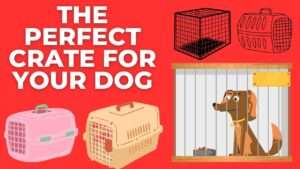

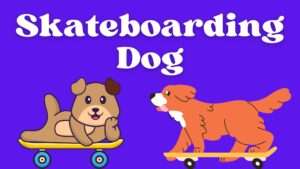

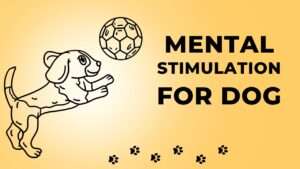
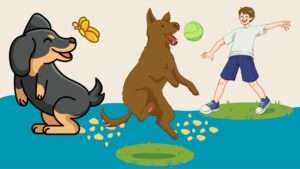

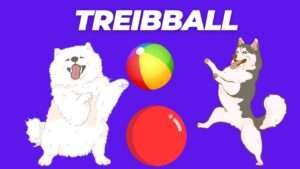



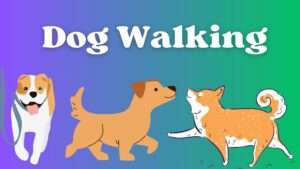

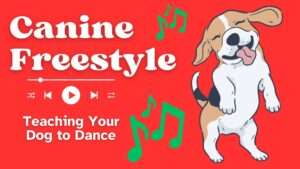
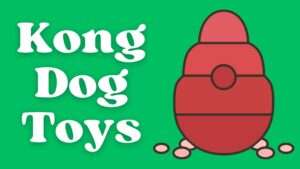




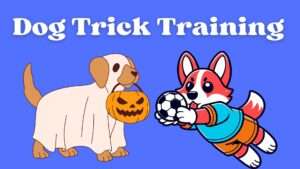
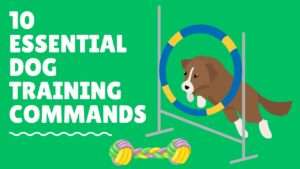
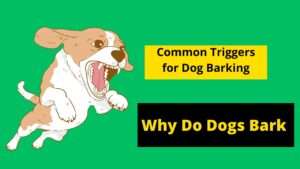

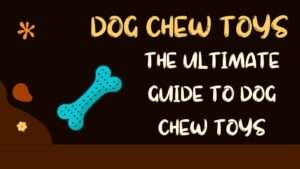







+ There are no comments
Add yours